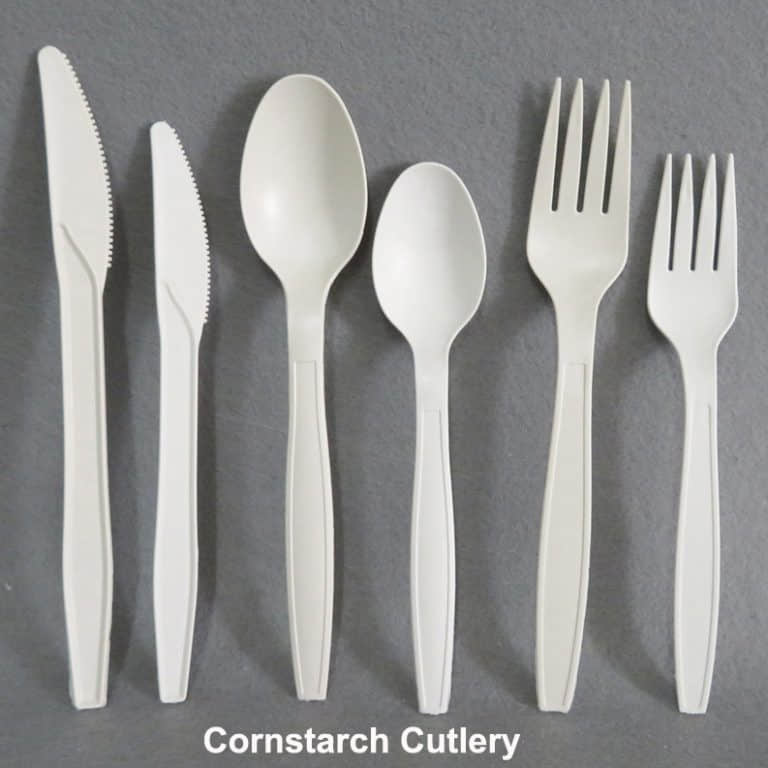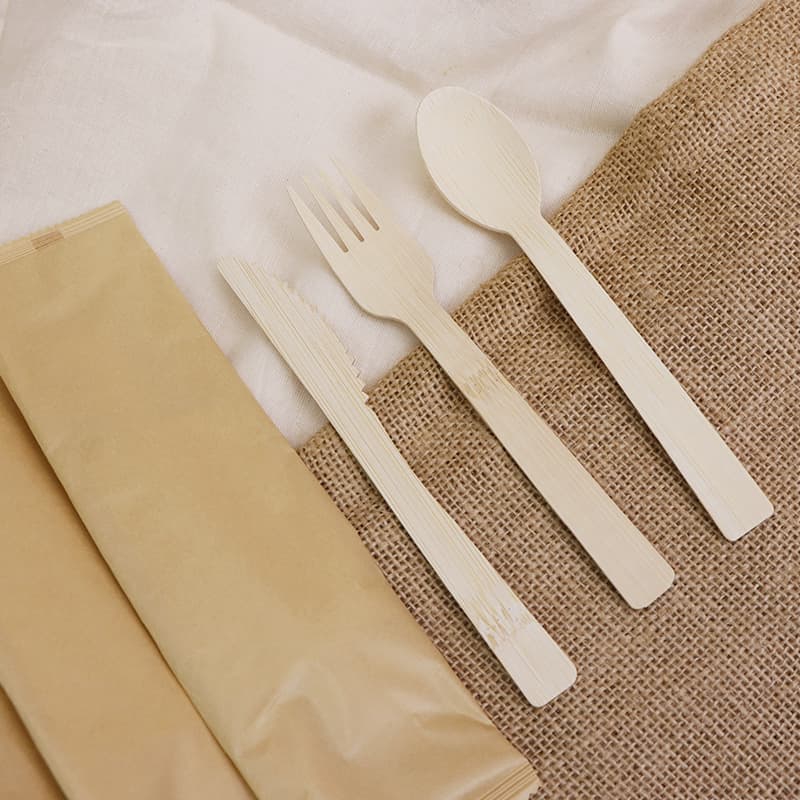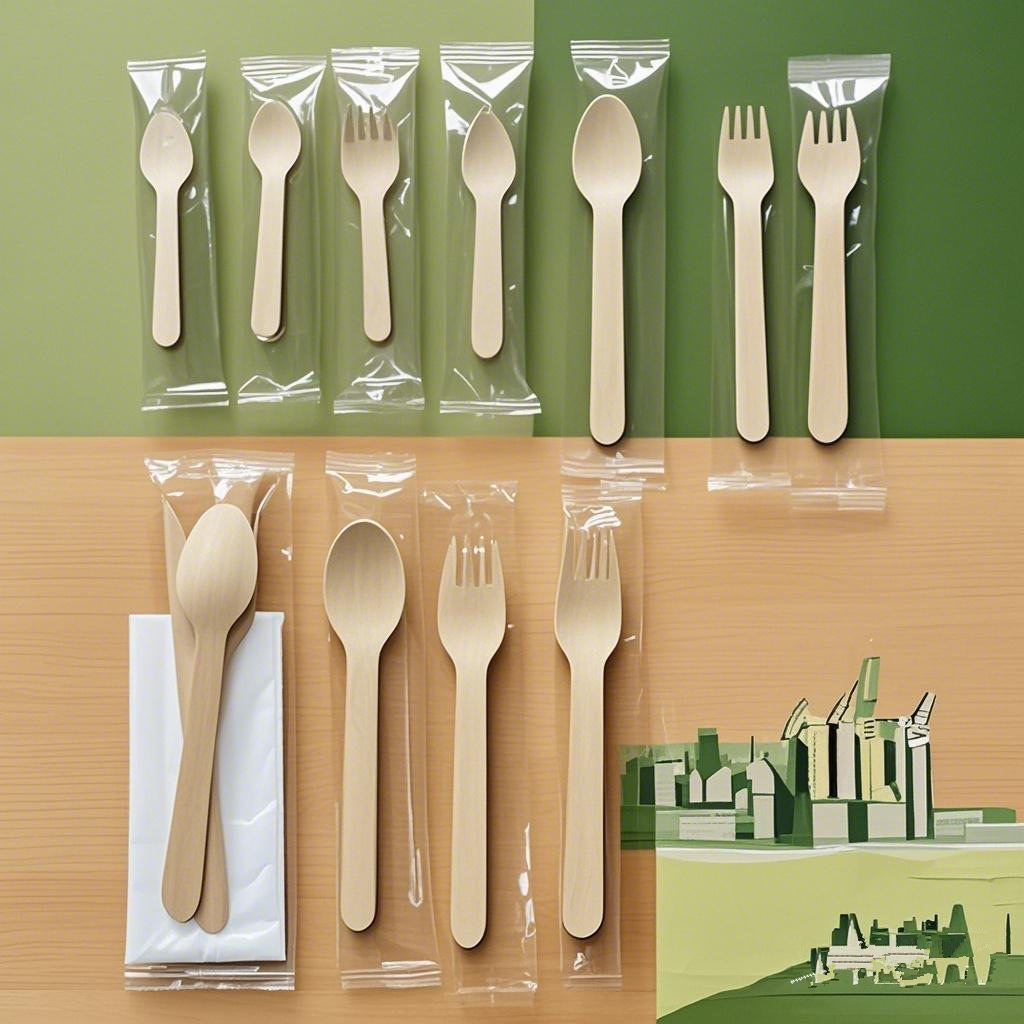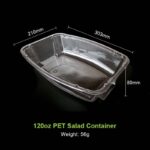Introduction: A Growing Shift Toward Sustainable Utensils
As governments tighten restrictions on single-use plastics and consumers demand eco-friendly dining solutions, the question arises: “What exactly is plant-based cutlery?”
Far from being just another trend, plant-based disposable cutlery represents a major shift toward zero-waste living and sustainable food packaging. From quick-service restaurants to wedding catering, eco-friendly cutlery is rapidly replacing traditional petroleum-based plastics.
This guide explores the materials, benefits, challenges, and real-world applications of plant-based disposable utensils, providing insights to help both individuals and businesses make greener choices.
What Is Plant-Based Cutlery?
Plant-based cutlery refers to forks, spoons, knives, and sporks made from renewable biological materials such as corn, sugarcane, or bamboo instead of fossil fuels. Unlike traditional plastic utensils made from polypropylene (PP) or polystyrene (PS), plant-based alternatives are biodegradable, compostable, or reusable—making them a smarter option for a circular economy.

Materials Used in Plant-Based Disposable Cutlery
1. PLA (Polylactic Acid) Cutlery
-
Source: Fermented corn starch or sugarcane.
-
Features: Lightweight, compostable in industrial facilities, not heat-resistant (up to ~40°C / 104°F).
-
Best Use Case: Cold foods such as salads, desserts, and fruit bowls.
2. CPLA (Crystallized PLA) Cutlery
-
Source: PLA processed to increase crystallinity.
-
Features: Heat-resistant up to 90°C (194°F), durable, compostable in commercial composting.
-
Best Use Case: Hot meals, catering, and takeaway services.
3. Plant Starch Cutlery (PSC)
-
Source: Corn, potato, or tapioca starch blended with small amounts of plastic.
-
Features: Strong and heat-tolerant but not fully compostable due to mixed polymers.
-
Best Use Case: Heavy-duty catering where sturdiness is prioritized over compostability.
4. Bamboo Cutlery
-
Source: Bamboo wood.
-
Features: 100% natural, reusable, home-compostable.
-
Best Use Case: Reusable sets for home dining, picnics, or eco-conscious restaurants.

Material Comparison Table
| Material | Source | Compostable? | Heat Resistance | Durability | Recyclable? | Best Use Cases |
|---|---|---|---|---|---|---|
| PLA | Corn starch | ✅ Industrial composting | ❌ Up to 40°C | Medium | ❌ | Salads, desserts |
| CPLA | Crystallized PLA | ✅ Industrial composting | ✅ Up to 90°C | High | ❌ | Hot meals, catering |
| PSC | Corn/potato starch + PP | ❌ Not fully compostable | ✅ Up to 100°C | Very high | ❌ | Heavy-duty dining |
| Bamboo | Bamboo wood | ✅ Home compostable | ✅ High heat | Reusable | ❌ | Reusable eco sets |
Benefits of Using Plant-Based Cutlery
1. Environmental Impact
-
Reduces dependency on fossil fuels.
-
Certified compostable options decompose within 90–180 days in industrial compost facilities.
-
Up to 80% fewer greenhouse gas emissions compared to traditional plastics.
2. Consumer Appeal
-
Seen as stylish and eco-conscious.
-
Attracts sustainability-driven customers, especially millennials and Gen Z.
-
Enhances brand image for restaurants, cafés, and catering services.
3. Practical Versatility
-
Available for hot and cold foods.
-
Suitable for weddings, corporate catering, and everyday takeaway meals.
-
Increasingly offered in custom-branded designs for marketing benefits.
Scientific Data & Real-World Applications
-
Journal of Polymers and the Environment (2022):
CPLA utensils fully composted within 12 weeks under industrial conditions, while PP and PS utensils showed no degradation after 2 years. -
European Bioplastics (2021):
PLA-based products reduce CO₂ emissions by approximately 60% compared to petroleum-based plastics.
Case Study 1: California State University System
-
Switched to plant-based cutlery across 23 campuses.
-
Reduced food-service plastic waste by 30%.
-
Increased student engagement in sustainability programs.
Case Study 2: EarthBeat Festival, Australia
-
Exclusive use of compostable cutlery for over 5,000 attendees.
-
All utensils composted onsite and reused as soil in local gardens.
-
Inspired similar zero-waste practices at other events.
Where to Buy Plant-Based Cutlery
Options for Consumers
-
Online eco-stores: Affordable packs for picnics and home use.
-
Supermarkets: Increasingly stock certified compostable cutlery.
Options for Businesses
-
Wholesale suppliers: Offer bulk pricing for restaurants, hotels, and caterers.
-
Custom branding: Restaurants can add logos to CPLA forks, spoons, and knives to strengthen eco branding.
👉 At Xiamen Dashan, we provide a full range of plant-based and plastic alternatives—including PLA, CPLA, PP, and bagasse packaging—ensuring both sustainability and performance for global foodservice brands.

FAQs About Plant-Based Cutlery
Q1: Is plant-based cutlery really biodegradable?
Yes, but conditions matter. PLA and CPLA are compostable in industrial composting facilities within 3–6 months. Home composting may not work unless the product is specifically certified.
Q2: Can it handle hot food?
CPLA and PSC are heat-resistant (90–100°C), making them suitable for soups, noodles, and hot meals. Regular PLA should only be used for cold foods.
Q3: How does bamboo cutlery compare?
Bamboo is reusable and home-compostable, while PLA and CPLA are better for single-use large events due to cost efficiency.
Q4: Is plant-based cutlery cost-effective?
Yes. While slightly more expensive than plastic, bulk buying and growing demand are lowering costs—making it competitive for cafés, caterers, and large events.
Conclusion: The Future of Dining Is Plant-Powered
Plant-based cutlery is not just a replacement for plastic—it’s a pathway to sustainable dining. With options like PLA, CPLA, PSC, and bamboo, businesses and consumers can select utensils that balance functionality, cost, and eco-friendliness.
From university campuses to festivals and cafés, real-world adoption proves that sustainable cutlery is both practical and scalable. As composting infrastructure improves and eco-awareness grows, the question isn’t if we’ll transition—but how quickly.
Next time you pick up a fork, ask yourself: Is it plant-powered?
References
-
Journal of Polymers and the Environment – Compostability of Bioplastics in Industrial Facilities (2022)
https://link.springer.com/journal/10924 -
European Bioplastics – Bioplastics and CO₂ Emissions Report (2021)
https://www.european-bioplastics.org -
U.S. Environmental Protection Agency (EPA) – Plastics and Sustainability
https://www.epa.gov/plastics -
Sustainable Packaging Coalition – Guide to Compostable Foodservice Ware
https://sustainablepackaging.org
Disclaimer & Copyright Notice
This article is created by the Dashan Packing editorial and research team.All information presented here is for educational and industry reference purposes only.Some data and standards cited in this article are sourced from publicly available materials,official regulatory documents, or third-party publications, which are properly credited where applicable.
All rights to third-party trademarks, images, and content belong to their respective owners.If any copyrighted material has been used inadvertently, please contact us at angel@chndashan.com.We respect intellectual property rights and will promptly remove or revise any material upon verification.





